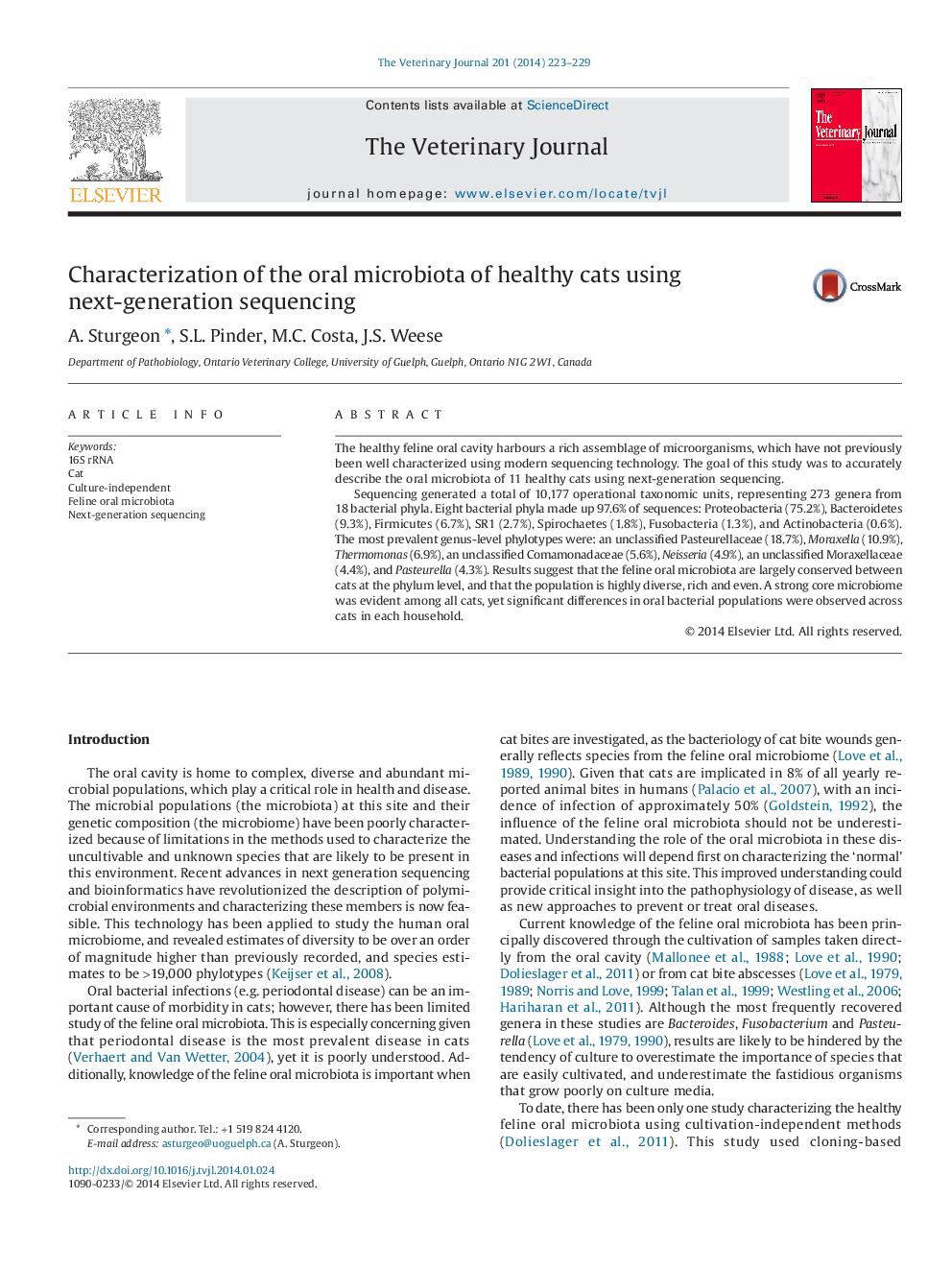| Article ID | Journal | Published Year | Pages | File Type |
|---|---|---|---|---|
| 5797880 | The Veterinary Journal | 2014 | 7 Pages |
The healthy feline oral cavity harbours a rich assemblage of microorganisms, which have not previously been well characterized using modern sequencing technology. The goal of this study was to accurately describe the oral microbiota of 11 healthy cats using next-generation sequencing.Sequencing generated a total of 10,177 operational taxonomic units, representing 273 genera from 18 bacterial phyla. Eight bacterial phyla made up 97.6% of sequences: Proteobacteria (75.2%), Bacteroidetes (9.3%), Firmicutes (6.7%), SR1 (2.7%), Spirochaetes (1.8%), Fusobacteria (1.3%), and Actinobacteria (0.6%). The most prevalent genus-level phylotypes were: an unclassified Pasteurellaceae (18.7%), Moraxella (10.9%), Thermomonas (6.9%), an unclassified Comamonadaceae (5.6%), Neisseria (4.9%), an unclassified Moraxellaceae (4.4%), and Pasteurella (4.3%). Results suggest that the feline oral microbiota are largely conserved between cats at the phylum level, and that the population is highly diverse, rich and even. A strong core microbiome was evident among all cats, yet significant differences in oral bacterial populations were observed across cats in each household.
